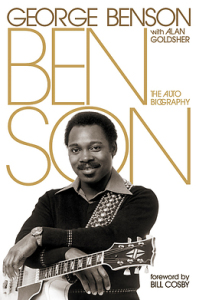 In reading guitar hero George Benson’s eponymous autobiography, you quickly realize that his climb to the heights of superstardom across multiple genres certainly wasn’t a breeze.
In reading guitar hero George Benson’s eponymous autobiography, you quickly realize that his climb to the heights of superstardom across multiple genres certainly wasn’t a breeze.
In fact, Benson’s true “fame” period of 1976 onward spans only one chapter – the last one.
Until then, you’re treated to an interesting array of anecdotes from childhood through humble beginnings through jazz fame. We learn the man with the big guitar who lit up the charts in the late 1970s and early 1980s started out as Little Georgie Benson, a ukelele-toting youngster playing for change on the streets of Pittsburgh. A high school dropout (technically) and avid Wes Montgomery fan, Benson would ultimately cut his musical chops backing up Brother Jack McDuff before leading his own bands.
Benson’s anecdotes are what make this book a worthwhile read. Who would have guessed he risked being assassinated while performing concerts in South Africa during Apartheid? Or that he turned down the chance to be one of James Brown’s Famous Flames? Or Columbia exec John Hammond signed Benson to a contract on a napkin while the latter was performing at a go-go club, only to have Benson leave the label after one album?
From jamming with a prickly Miles Davis to performing with an even pricklier Benny Goodman, Benson unleashes one good story after another from his vault of memories. While fans might be hankering for every element of Benson’s life post-1976, the musician’s tales leading up to the pantheon of fame are what give this artist his humility, which is reflected on all the book’s pages. This is a relatively quick read but a groovy one nonetheless.
– Ira Kantor







Something we forget to think about is the effect of a smile. George smiles quite readily, and people always respond to a genuine smile, one that comes from the heart.